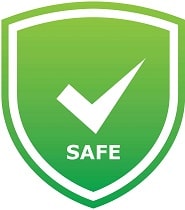Is Thiasin Safe in Breastfeeding
Question
I am a breastfeeding mother and i want to know if it is safe to use Thiasin? Is Thiasin safe for nursing mother and child? Does Thiasin extracts into breast milk? Does Thiasin has any long term or short term side effects on infants? Can Thiasin influence milk supply or can Thiasin decrease milk supply in lactating mothers?
Thiasin lactation summary

- DrLact safety Score for Thiasin is 1 out of 8 which is considered Safe as per our analyses.
- A safety Score of 1 indicates that usage of Thiasin is mostly safe during lactation for breastfed baby.
- Our study of different scientific research also indicates that Thiasin does not cause any serious side effects in breastfeeding mothers.
- Most of scientific studies and research papers declaring usage of Thiasin safe in breastfeeding are based on normal dosage and may not hold true for higher dosage.
- Score calculated using the DrLact safety Version 1.2 model, this score ranges from 0 to 8 and measures overall safety of drug in lactation. Scores are primarily calculated using publicly available case studies, research papers, other scientific journals and publically available data.
Answer by Dr. Ru: About Thiasin usage in lactation
Be cautious with those neonates suffering of hyperbilirrubinemia or G-6-P-D deficiency. Not commercially available in SpainBe aware of the possibility of false negative results of bacterial cultures when the mother is on antibiotics.
Answer by DrLact: About Thiasin usage in lactation
With healthy, fullterm infants it appears acceptable to use Thiasin during breastfeeding after the newborn period.[1][2] Until further data are accumulated, alternate agents should probably be used in jaundiced, ill, stressed or premature infants, because of the risk of bilirubin displacement and kernicterus. Thiasin should be avoided while breastfeeding a glucose-6-phosphate dehydrogenase (G6PD) deficient infant.
Alternate Drugs
Cefoxitin(Safe)
Nevirapine(Low Risk)
Pyrimethamine(Safe)
Paromomycin(Safe)
Cephalexin(Safe)
Naftifine(Safe)
Cefazolin(Safe)
Gatifloxacin(Low Risk)
Abacavir(Safe)
Colistimethate(Safe)
Nelfinavir(Unsafe)
Mefloquine(Safe)
Dapsone(Low Risk)
Ofloxacin(Safe)
Sulfisoxazole(Safe)
Oseltamivir(Safe)
Nitazoxanide(Safe)
Meropenem(Safe)
Amoxicillin(Safe)
Hydroxychloroquine(Safe)
Cefuroxime(Safe)
Ciclopirox(Safe)
Cefadroxil(Safe)
Roxithromycin(Safe)
Enoxacin(Low Risk)
Rifaximin(Safe)
Cefotetan(Safe)
Chloroquine(Safe)
Butoconazole(Safe)
Capreomycin(Low Risk)
Norfloxacin(Safe)
Chloramphenicol(Unsafe)
Procaine Penicillin G(Safe)
Tinidazole(Safe)
Lamivudine(Safe)
Loracarbef(Safe)
Ceftriaxone(Safe)
Cefaclor(Safe)
Vancomycin(Safe)
Doxycycline(Low Risk)
Cefotaxime(Safe)
Sulfasalazine(Safe)
Indinavir(Unsafe)
Amikacin(Safe)
Trovafloxacin(Unsafe)
Albendazole(Safe)
Ertapenem(Safe)
Piperacillin(Safe)
Lomefloxacin(Low Risk)
Zidovudine(Low Risk)
Neomycin(Safe)
Penciclovir(Safe)
Dicloxacillin(Safe)
Tobramycin(Safe)
Telithromycin(Unsafe)
Famciclovir(Low Risk)
Econazole(Safe)
Metronidazole(Safe)
Levofloxacin(Low Risk)
Ceftibuten(Safe)
Ivermectin(Safe)
Tenofovir(Safe)
Valganciclovir(Low Risk)
Demeclocycline(Low Risk)
Cefixime(Safe)
Amantadine(Low Risk)
Ticarcillin(Safe)
Lindane(Unsafe)
Nafcillin(Safe)
Erythromycin(Low Risk)
Ganciclovir(Low Risk)
Penicillin V(Safe)
Kanamycin(Safe)
Floxacillin(Safe)
Ceftazidime(Safe)
Permethrin(Safe)
Bacampicillin(Safe)
Cloxacillin(Safe)
Tioconazole(Safe)
Cefepime(Safe)
Emtricitabine(Safe)
Praziquantel(Safe)
Saquinavir(Unsafe)
Moxifloxacin(Low Risk)
Clindamycin(Low Risk)
Secnidazole(Safe)
Terconazole(Safe)
Primaquine(Low Risk)
Penicillin G(Safe)
Efavirenz(Unsafe)
Salicylic Acid(Safe)
Cefprozil(Safe)
Aztreonam(Safe)
Clarithromycin(Safe)
Teicoplanin(Safe)
Ciprofloxacin(Safe)
Sulconazole(Safe)
Atovaquone(Low Risk)
Didanosine(Unsafe)
Azithromycin(Safe)
Linezolid(Low Risk)
Oxytetracycline(Safe)
Tetracycline(Safe)
Malathion(Low Risk)
Mebendazole(Safe)
Ritonavir(Unsafe)
Ampicillin(Safe)
Acyclovir(Safe)
Fusidic Acid(Safe)
Cephradine(Safe)
Polymyxin B(Safe)
Cefdinir(Safe)
Sulfamethoxazole(Safe)
Gentamicin(Safe)
Methicillin(Low Risk)
Quinine(Safe)
Oxiconazole(Safe)
Streptomycin(Safe)
Colistimethate(Safe)
Methenamine(Unsafe)
Ofloxacin(Safe)
Sulfisoxazole(Safe)
Cefotetan(Safe)
Methenamine Mandelate(Unsafe)
Amoxicillin(Safe)
Cefuroxime(Safe)
Mupirocin(Safe)
Cefadroxil(Safe)
Enoxacin(Low Risk)
Tinidazole(Safe)
Capreomycin(Low Risk)
Norfloxacin(Safe)
Trimethoprim(Safe)
Chloramphenicol(Unsafe)
Procaine Penicillin G(Safe)
Loracarbef(Safe)
Ceftriaxone(Safe)
Cefaclor(Safe)
Vancomycin(Safe)
Doxycycline(Low Risk)
Cefotaxime(Safe)
Trovafloxacin(Unsafe)
Ertapenem(Safe)
Nitrofurantoin(Safe)
Iodine(Unsafe)
Piperacillin(Safe)
Sulfasalazine(Safe)
Lomefloxacin(Low Risk)
Neomycin(Safe)
Dicloxacillin(Safe)
Amikacin(Safe)
Tobramycin(Safe)
Metronidazole(Safe)
Levofloxacin(Low Risk)
Ceftibuten(Safe)
Chlorhexidine(Safe)
Nalidixic Acid(Low Risk)
Demeclocycline(Low Risk)
Cefixime(Safe)
Ticarcillin(Safe)
Nafcillin(Safe)
Erythromycin(Low Risk)
Penicillin V(Safe)
Kanamycin(Safe)
Floxacillin(Safe)
Ceftazidime(Safe)
Bacampicillin(Safe)
Cloxacillin(Safe)
Cefepime(Safe)
Moxifloxacin(Low Risk)
Clindamycin(Low Risk)
Penicillin G(Safe)
Cefprozil(Safe)
Aztreonam(Safe)
Ciprofloxacin(Safe)
Tetracycline(Safe)
Oxytetracycline(Safe)
Ampicillin(Safe)
Teicoplanin(Safe)
Cephradine(Safe)
Polymyxin B(Safe)
Cefdinir(Safe)
Sulfamethoxazole(Safe)
Gentamicin(Safe)
Methicillin(Low Risk)
Streptomycin(Safe)
Cefoxitin(Safe)
Fosfomycin(Safe)
Fusidic Acid(Safe)
Cephalexin(Safe)
Cefazolin(Safe)
Gatifloxacin(Low Risk)
Sulfasalazine(Safe)
Probenecid(Safe)
Sulfamethoxazole(Safe)
Sulfisoxazole(Safe)
